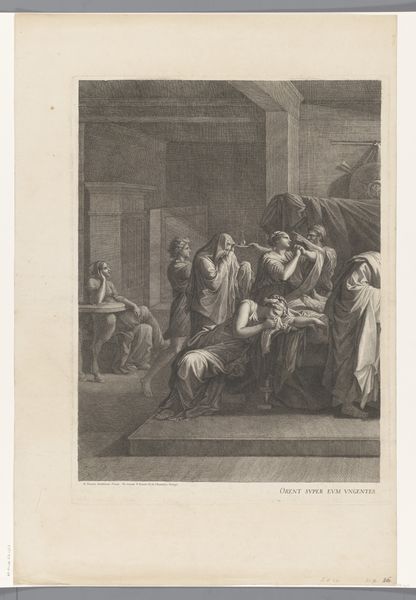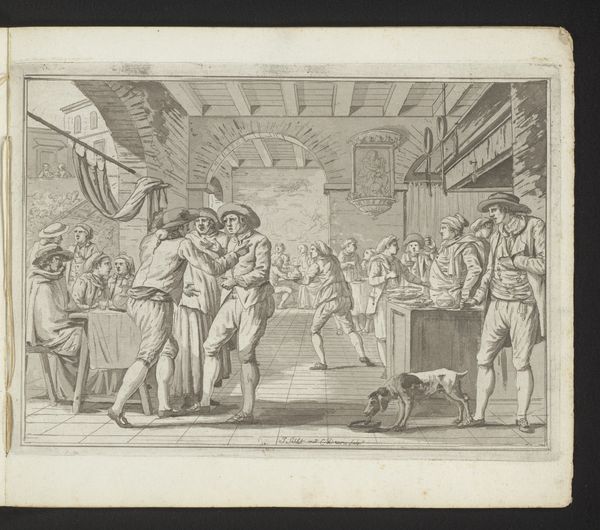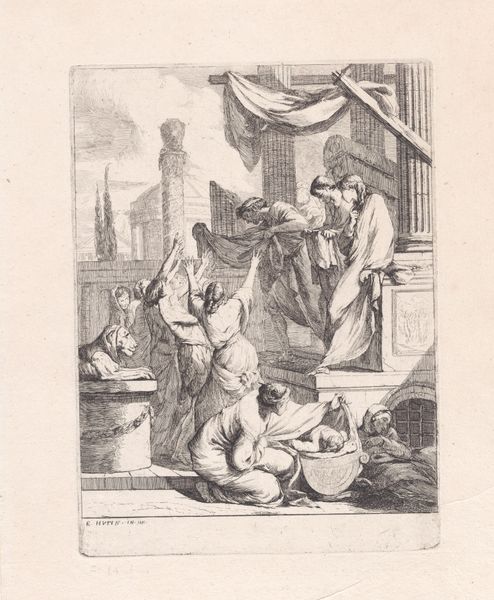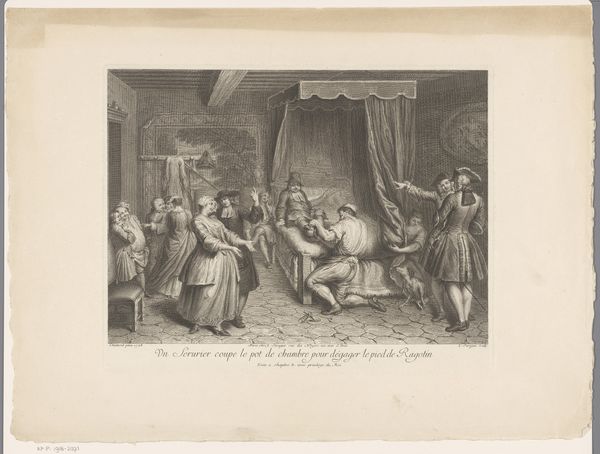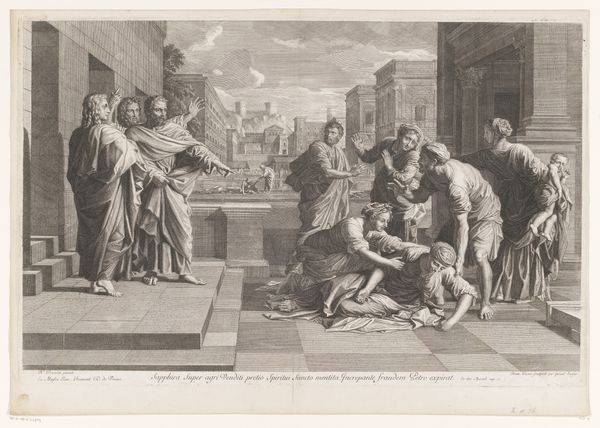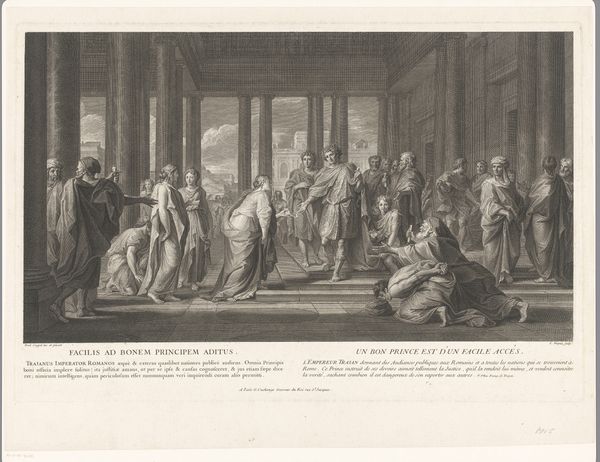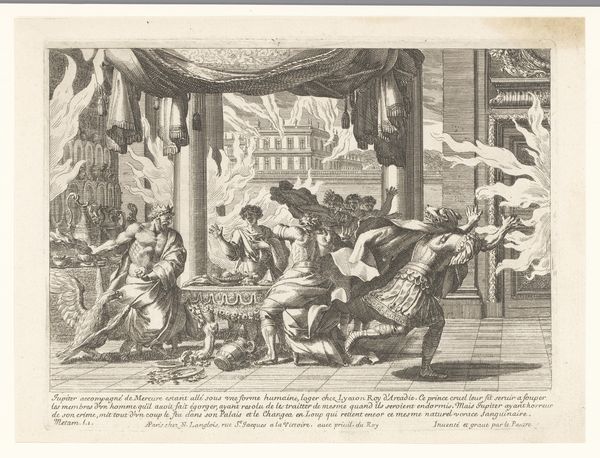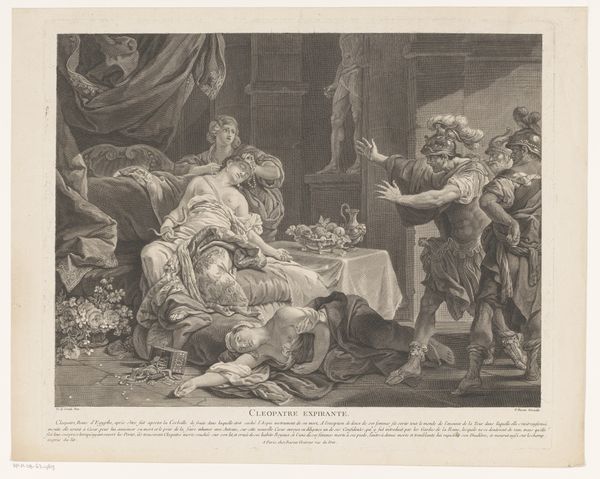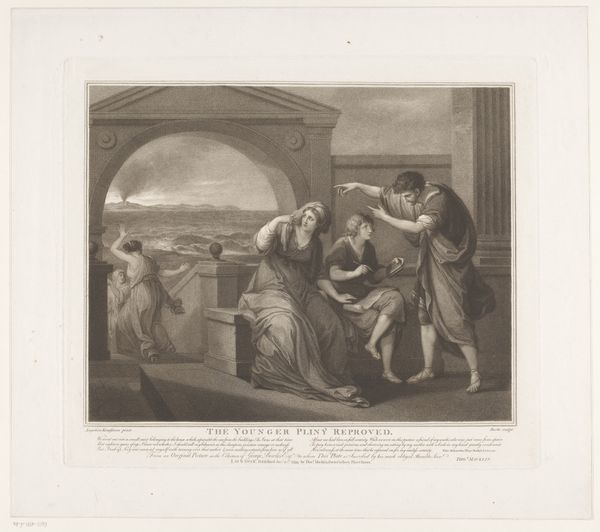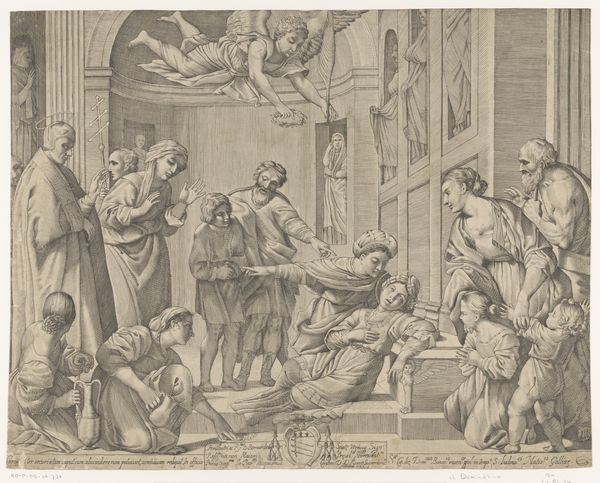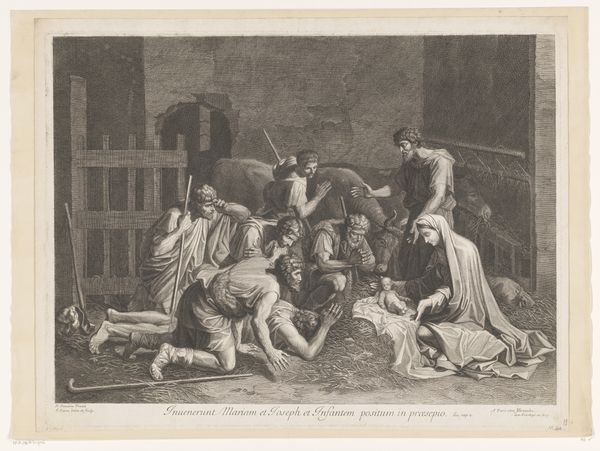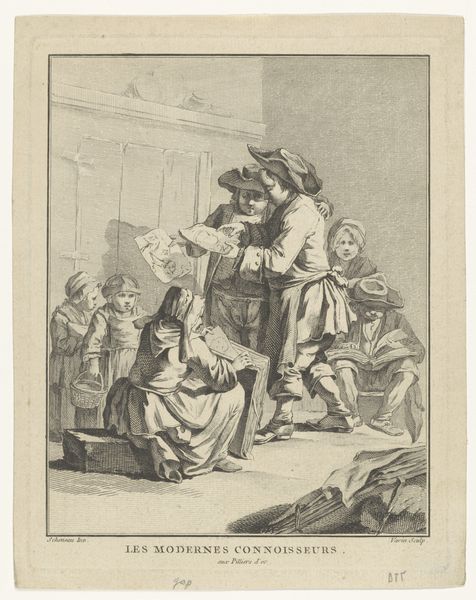
print, etching
#
narrative-art
#
baroque
# print
#
etching
#
figuration
#
line
#
history-painting
Dimensions: height 492 mm, width 638 mm
Copyright: Rijks Museum: Open Domain
Editor: This etching, "Martyrdom of Saint Gervasius," by Etienne Picart, created sometime between 1652 and 1689, is intensely unsettling. The brutal scene is starkly rendered, leaving me feeling rather disturbed. What strikes you most when you look at it? Curator: The overwhelming sense of violence is certainly intended to make us, the viewers, reflect on faith and sacrifice. Note the central figure, tied down and exposed; in Christian iconography, this vulnerable body represents the ultimate test of faith. What symbols of power, earthly and divine, do you recognize here? Editor: I see the figures wielding whips, and someone overseeing the torture. Are they Roman officials? It all seems very ritualized. Curator: Indeed. The whips are tools of Roman oppression, literally marking the body as a site of control. Yet, consider the gestures – the torturers are frenzied, but Gervasius is passive, even serene. The architectural backdrop also provides important symbolic clues. The temple suggests that Gervasius's defiance is directed against the dominant pagan beliefs and Roman state. What values might this image affirm for its intended audience? Editor: Perhaps it’s promoting the idea of spiritual strength over physical pain? Or that devotion is worth sacrificing everything? Curator: Precisely! Images like these helped shape the cultural memory of early Christian martyrs, establishing a narrative of unwavering belief. The story becomes more important than the man. How might modern viewers respond differently, do you think? Editor: It’s so different from our modern sensibility, far removed. Curator: It makes you think, though, about the ongoing power of visual representation to perpetuate cultural narratives, even when those narratives are rooted in violence.
Comments
No comments
Be the first to comment and join the conversation on the ultimate creative platform.

